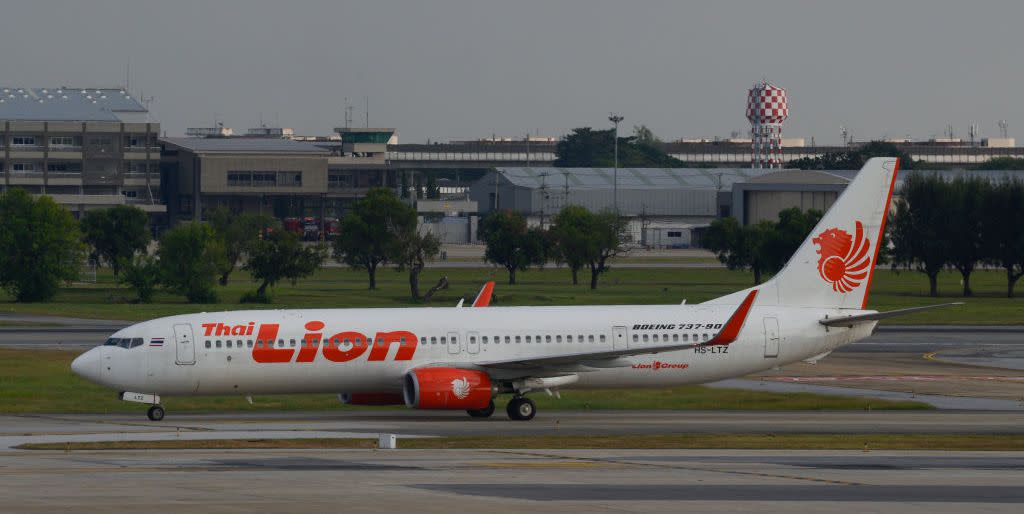Lion Air Pilots Were Checking the 737 Max 8's Handbook Right Before the Plane Crashed

Moments before Lion Air Flight 610 plunged into the Java Sea killing all 189 people onboard last October, pilots of the plane searched through a handbook looking for guidance on how to rescue the aircraft from its downward trajectory, Reuters reports.
Three sources familiar with the investigation of the Boeing 737 Max 8's flight data recorders gave a visceral play-by-play of what ensued inside the cockpit, when a faulty sensor on the plane's fuselage triggered an automated anti-stall system that sent the plane into a nosedive.
Boeing's 737 Max 8 aircraft have been grounded by aviation authorities across the world after two catastrophic crashes in five months. Earlier this month, Ethiopia Airlines Flight 302 crashed shortly after departing Addis Ababa, killing all 157 people. Both crashes occurred within minutes of takeoff, with pilots on both flights requesting to return to their respective airports. Authorities investigating the Ethiopia Airlines crash have remarked upon the "clear similarities" surrounding the circumstances of both crashes, and the Department of Transportation's (DOT) Inspector General is now formally investigating the Federal Aviation Administration's (FAA) approval process of Boeing's planes.
Before the Lion Air Flight crashed 15 minutes after departure, pilots struggled to overcome the plane's Maneuvering Characteristics Augmentation System (MCAS), which tilts the aircraft's nose downward in the event of a stall upon ascent. Except the plane wasn't stalling. Rather, the recently replaced sensor was feeding inaccurate readings into the cockpit, according to reports. Officials who spoke anonymously with Reuters revealed the contents of the plane's black box recorders, which hadn't previously been made public. Per Reuters, the first officer relayed a "flight control problem" two minutes after departure.
A brief synopsis of the situation in the cockpit is harrowing:
The captain asked the first officer to check the quick reference handbook, which contains checklists for abnormal events, the first source said. For the next nine minutes, the jet warned pilots it was in a stall and pushed the nose down in response, the report showed. A stall is when the airflow over a plane’s wings is too weak to generate lift and keep it flying.
As was previously reported, the pilots struggled to overcome the nosedive, and found themselves headed for a collision with the ocean. In the tragedy's aftermath, questions have surfaced concerning whether the pilots were adequately trained, and whether Boeing provided enough information to pilots on how to disable the MCAS system. Two sources who spoke with Reuters noted that the aircraft experienced the issue the evening before on a separate flight, but the glitch was overcome by the pilot. The manufacturer has said that there's a strict protocol that must be memorized by pilots to overcome the glitch.
Boeing has assured airlines and regulators across the world that a software update to amend the faulty glitch is imminent, and should be made available by the end of the month. Meanwhile, its plane remains grounded at airports across the world.
Source: Reuters
('You Might Also Like',)

